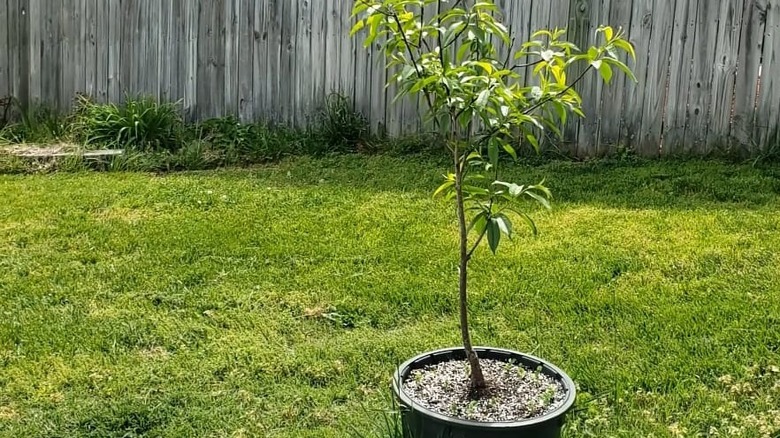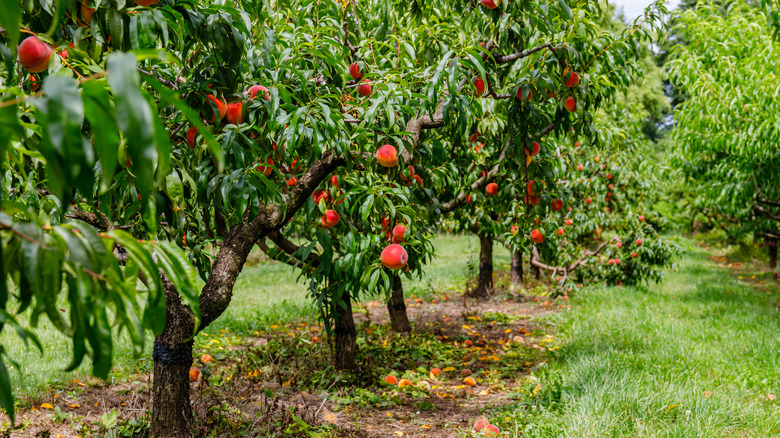Garden Trees, Shrubs & Vines
Ezekiel Maina
Oh, the peaches! Whether crunchy or succulent, they tantalize the taste buds, bewitch the nostrils, and paint a charming portrait as they dangle in clusters on their branchy abodes. However, growing these delights requires more than just casting seeds and expecting wonders. And so, you may ask, “What do I need to know before planting a peach tree?” At times, success is about dodging missteps.
Selecting an ill-suited peach type for your USDA zone guarantees a fruitless endeavor. That demands understanding your local climate. Consider the Dixieland peach if you reside in zone 5 or above. Meanwhile, Intrepid, Madison, Reliance, and Contender varieties grace zones 4. But should you feel overwhelmed by the internet lingo, reputable local nurseries or gardening groups can be treasure troves of handy recommendations.
Regardless of the USDA zone, the soil reigns supreme. Peach trees fancy loam soil abundant in organic matter, thanks to the Michelin-star-worthy crumbly texture that strikes the right balance of drainage and nutrient retention. As for optimal soil pH for peach trees, aim for a neutral 6 to 7. But don’t hesitate to unleash your inner alchemist if your soil needs tweaking to perfection. A dash of garden sulfur can subdue alkalinity, while a dose of garden lime works to pare down excess acidity. Yet one may wonder, what makes peach trees grow faster? A generous helping of compost and well-balanced fertilizer should deliver the nourishment peach plants crave.
Beware of spacing and watering pitfalls for peach trees

Nick Thomas/YouTube
Picture planting peach trees like setting up for a yoga retreat — space is paramount, and overhydration can ruin the vibe. Cooped-up peach trees, or those swimming in hydration, await a tragic performance of stunted growth and fungal woes. Conversely, proper spacing gifts roots freedom to roam and branches to twirl around in their protective sphere. This space offers more than mere elbow room — it’s also a fortress against the contagious spread of fungal diseases. Plus, the spaciousness is a welcome mat for bees, ushering in fruitful pollination. So how much space does a peach tree need? Generally, 20 feet apart does the trick, but dwarf varieties can manage a 10-foot separation. Another reason spacing takes center stage: sunbathing. Peach trees, quite the sun worshippers, need around 8 hours of celestial rays per day.
Next, let’s broach the moist subject. Achieving a wholesome balance of moist-but-not-waterlogged soil is key for the first two years, comparable to perfectly steeped tea. The watering frequency should jive with the weather and soil moisture levels. Aim for a weekly dose of 1 to 2 inches if drip irrigating. Another unsung hero in peach tree care is mulching. An extensive, 2 to 3-inch layer of organic mulch helps keep weeds, water-pooling, and evaporation in check while protecting against those troublesome freeze injuries.
Best companion plants for peach trees

nnattalli/Shutterstock
Even the most stoic peach tree, boasting flawless fruit like a supermodel on Instagram, enjoys the company of some low-maintenance pals — the sitcom squad in your garden. These neighboring plants should have shallow roots and get along like best friends. If they don’t vibe as Ross and Rachel on “Friends,” swap them out with rotations. Now, onto the specifics. Companion plants like geraniums, onions, and garlic pack a fragrant punch against borers and aphids. Think of these pests as welcome as mosquitoes at a nudist gathering. Meanwhile, asparagus is a natural weapon against root-knot nematodes.
Self-pollinating peach trees are like crunchy introverts with a hidden zest. But like a shy bachelor, they appreciate the help of matchmakers like shallow-rooted herbs (such as basil) and wildflowers (cue daisies and cosmos). Such plants attract bees and butterflies, nature’s little Cupids that aid pollination, enhancing the quality and quantity of your fruits. Onto the behind-the-scenes crew high on nitrogen and potassium — tansy and legumes. Nitrogen aids vegetative growth and fruiting, while potassium provides quality assurance for the fruits. So, what should not be planted near peach trees? This is where raspberries, peppers, tomatoes, potatoes, and broccoli miss the casting call — they should be kept away from your peach trees. That’s unless you fancy a horticultural drama with a twist of alarming pest invasion or nutritional deficiency.



